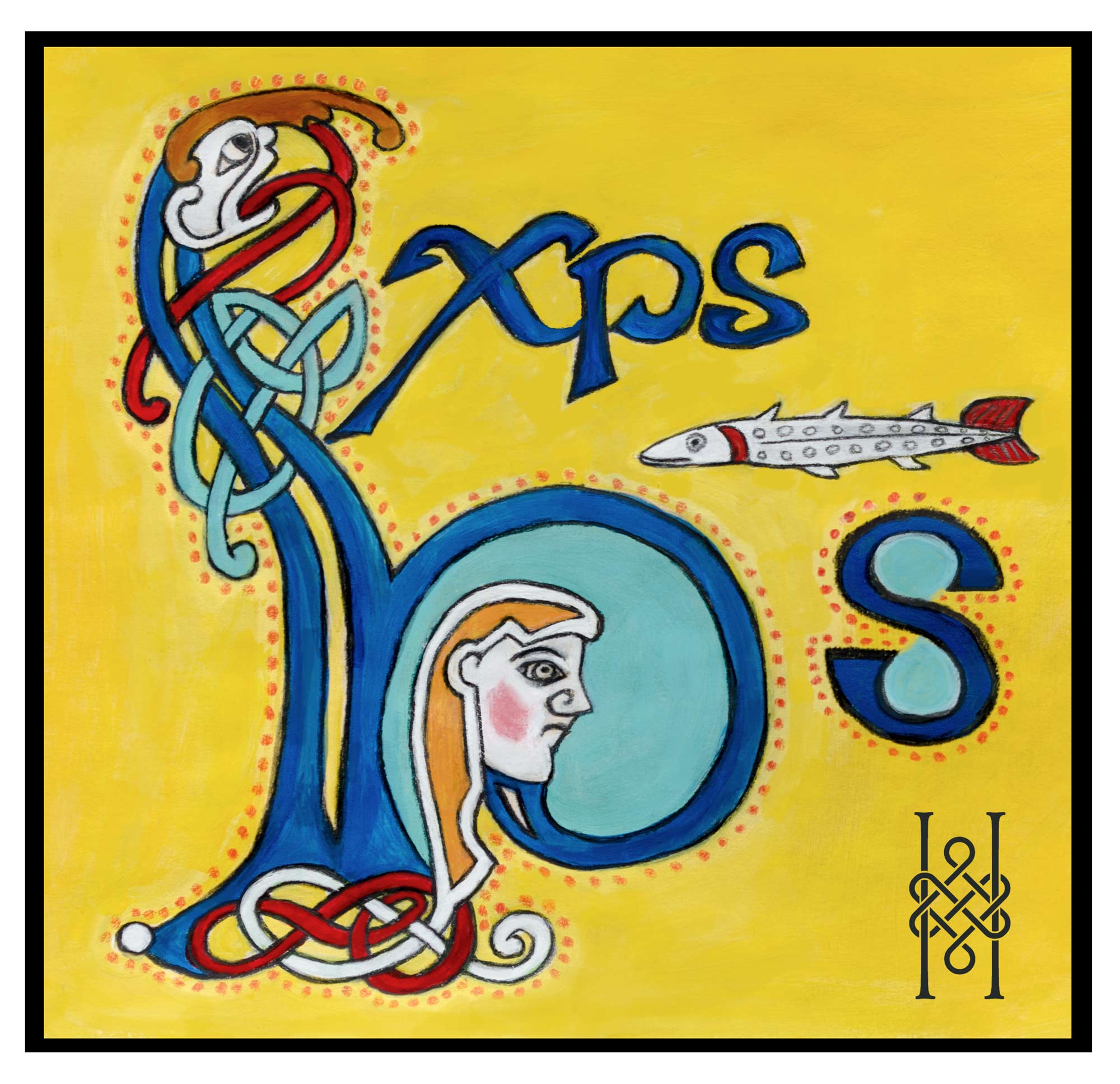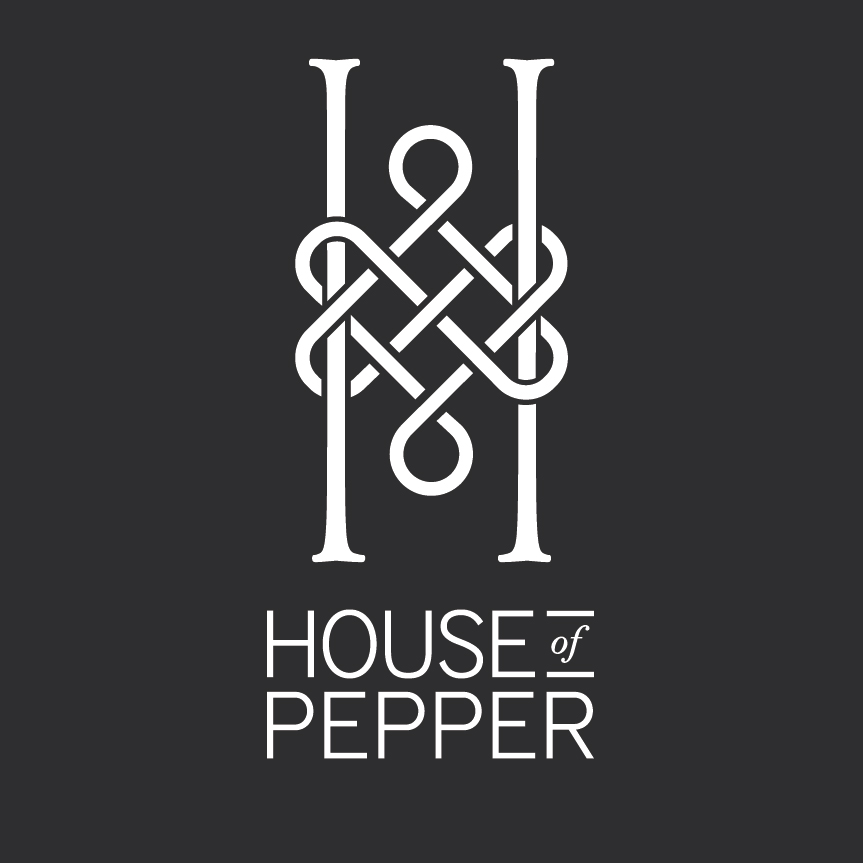Detail from the Book of Kells

Christ in this adaption from the Celtic Book of Kells folio 179v, line 10 is shown with golden hair and a youthful and radiant appearance. The face of Jesus is placed centrally on the page and the position and line of eyesight adds focus to his importance. There is no decorative distraction above or below this ornamental design. The hair extends into decorative interlacing at the base of the letters.
Fish Symbol
The fish looks like a salmon and resembles the fish escutcheon found at the Sutton Hoo burial site in East Anglia. The fish symbol is from the second century and is associated with the Eucharist. It is thought to be associated with baptism and can be used as the sign of a Christian. The fish normally accompanies the face or name of Christ as a superscript abbreviation or cross bar in illuminated manuscripts.
Lion Symbol
The lion was a symbol of Christ’s resurrection. The lion’s head is shown as a finial on the back -curving upright ascender of the split letter h. The spine is doubled to include and represent an i. Interlacing extends from the tongue and mane of the lion and the red dots as rubrication surround the entire abbreviation of ihs.
Letter Abbreviations
This is a Greek abbreviation for the word Jesus. The word ihs is combined with xps which is another Greek abbreviation and stands for the word Christus which stands for Christ in Latin. The lion is also the symbol for the evangelist St. Mark in the Book of Kells.
The Snake and the Peacock
The peacock symbolizes another aspect of Christ. The flesh of the peacock, it was believed did not putrefy or become contaminated and so the metaphor represents the incorruptibility of Christ. Peacocks are shown near Christ to confirm identity or in contorted shapes in the letters and sometimes as repeating bird motifs in borders.
Conclusion
To conclude, symbols give meaning to the story or message. The Church through the centuries understood the power of the visual image in books, lead light windows, great sculptures, paintings and architecture. As a result, the Church benefited from the passion and creativity of the artists. Certainly, this was the case with the Book of Kells and other medieval manuscripts. The congregation learned about the Bible narratives from the imagination and art of the artists that turned words into metaphors, symbols, and pictures.
